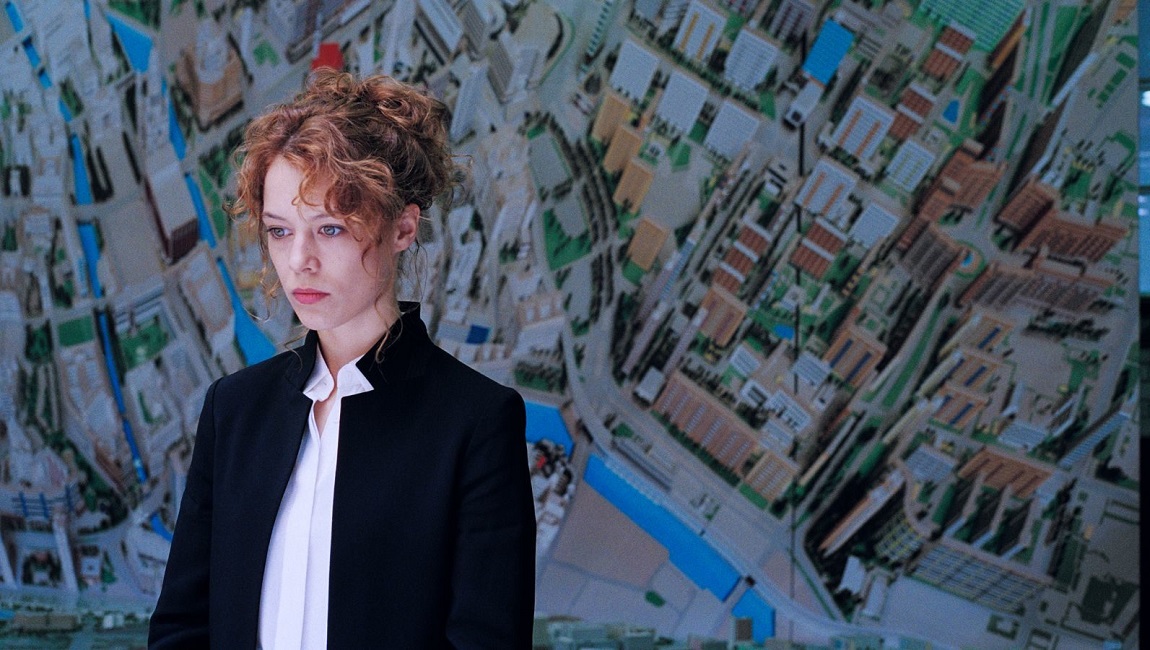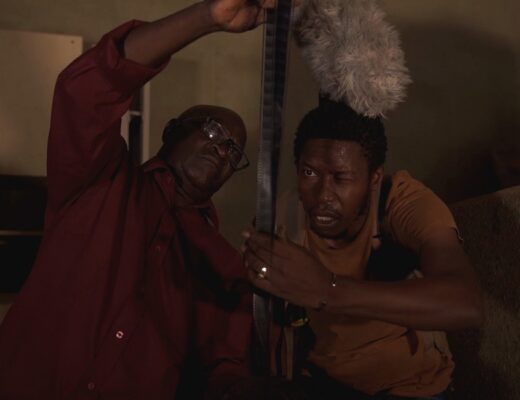One of the unique features of Emilia Beatriz’s new film barrunto is the omnipresence of sur- and subtitles, translating between Spanish and English, differentiating between various Spanish dialects, and providing verbal descriptions of sounds. But these titles are poetic and evocative, showing that they are more than the typical captions for the hearing impaired. For example, one reads “(blubber trickles, bubbles, and pops on sand),” while another describes a sound as “(DEEP MENACING VIBRATION RETURNS).” One of the effects of these onscreen titles is to conceptually encode our listening. Sound is often ambiguous, but Beatriz emphasizes their importance while also “titling” these aural effects, generating a disjunction between our hearing and our reading.
This movement in two directions — sensual and discursive — is one of the defining elements of barrunto. It’s a landscape film by and large, examining expanses and surfaces across many continents and oceans but paying particular attention to Cape Wrath, an area in northwestern Scotland where the U.S. military conducted atomic tests. Beatriz’s camera scans the ground along the cape while permitting us to hear the incessant click of a Geiger counter. In this way, the filmmaker insists upon geography as history, a material record of human events.
At the same time, barrunto features footage from protests in both Scotland (where Beatriz now lives) and Puerto Rico (where they were born). The common denominator between these two spaces is colonialism: Scotland a part of the U.K. and so subject to American/NATO military jurisdiction, and Puerto Rico a long-held colony of the United States. These colonial histories have written themselves upon the land and the people who live there, whether it’s with radioactivity or the impact of climate change, in a case such as Hurricane Maria. But also, playing on the dual etymology of the names of the planet Uranus and the element uranium, Beatriz draws conceptual lines from the earth to outer space, where the atmospheric differences — Uranus’s gravity would crush us were we to set foot there — are implicitly compared with juridical and colonial differences on our own planet — for instance, how an American territory is given but a fraction of the disaster aid that a U.S. state would receive.
The title of Emilia Beatriz’s new film is as slippery as the film itself. Google Translate says barrunto means “hunch,” but it is also used as a verb meaning to accuse, insinuate, or conjecture. This is fitting, since Beatriz clearly aims to accuse colonial power but does so in a sidelong, indirect manner. Despite its brief 70-minute runtime, Barrunto is a sprawling film, incorporating sound collage, poetry, visual abstraction, and rapturous footage of the Scottish coastal landscape. There is even a narrator of sorts, referred to onscreen as Vox Elemental, who often links the disparate locales by invoking ancestral memory and a global, even intergalactic consciousness.
barrunto can be an overwhelming experience, but this is partly because we have become so unaccustomed to artistic statements of such cosmological ambition. Films like Malick’s The Tree of Life or Brakhage’s Dog Star Man have largely fallen out of favor, but Beatriz renews this all-embracing aesthetic approach by reaching outward, drawing on materialist and spiritualist traditions found in artists as diverse as June Jordan, Ursula LeGuin, and Margaret Tait. Beatriz is following her hunch, that feminist/womanist, ecological, and anti-colonial action can help us overcome our enforced separation, taking us from the bottom of the ocean to the outer reaches of the solar system.







